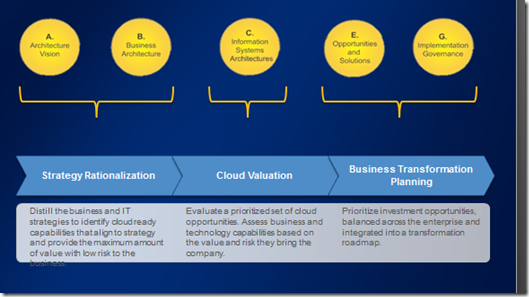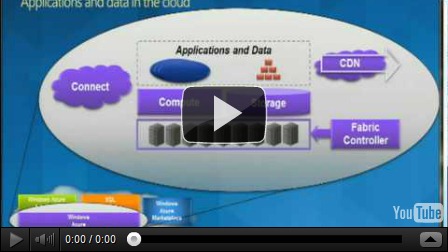Cloud is moving fast , so are the IT companies. The Cloud Platform companies are churning out new features examples Azure 2.0 , Amazon new releases. The new functionality is tuned to the industry needs.
Gartner estimates, over the next five years, enterprises will spend $112 billion cumulatively on cloud services, 91% of IT Professionals anticipate in 5 years cloud will overtake on-premises computing & Over 80% of IT leaders indicate that their staff will need to develop new skills.
In the last 3 decades there has been billions invested in IT. These IT application a good percentage of them will most likely move into cloud. The IT services and consulting companies as of current have move past the stages of POC’s and building capacity for cloud development by way or training or buying out smaller companies in cloud development. There is a need for most IT services and consulting companies to start thinking of a good framework & proven practices for addressing cloud projects. Cloud is essentially a disruptive technology and is a part of overall IT Architecture & I believe an Enterprise Architecture should drive Cloud Strategy & Planning.
I read a couple of articles from companies like
Aditi Technologies http://adititechnologiesblog.blogspot.in/2012/06/5-important-considerations-for.html,- I found most of the articles from Aditi on tactical technological benefits , no insights into maturity of having a Strategy Framework for Cloud
Sapient - CLOUD COMPUTING FOR THE FINANCIAL SERVICES ... – Sapient- Very Half Baked Strategy
Booz Hamilton - http://www.boozallen.com/consulting/transform-technology/technology-innovation/cloud-computing- Seem to have some kind of a framework not much data on the same.
Open Group on Cloud Computing - http://www3.opengroup.org/subjectareas/cloudcomputing- Some good stuff but not open to public
I’m still in the process of evaluating more companies. I see the need to highlight the importance of having a Cloud Strategy and Planning Framework. TOGAF in some ways can be morphed to run large cloud engagement. The below write up is work in progress I’m reading, collating data & putting my own perspective to the same.
. I have studied the sapient cloud framework, CSC cloud adoption strategy , accenture cloud strategy framework. One thing which is categorically missed out is Cloud although a disruptive technology but still is a part of the overall IT Architecture. Hence Enterprise Architecture should ideally drive the Cloud Strategy & Planning.
The Need for Cloud Strategy & Planning Framework
A need for a robust cloud strategy framework is required. The CSP will help aligning the Cloud Strategy to Implementation. The Corporate Strategy defining the business benefits , Business & IT Capability Analysis & Transformation Plans & RoadMaps. The Transformative Strategy driving the execution ( Initiatives & Projects).
The Methodology Used
One can use any Enterprise Architecture Framework which indeed has a methodology like TOGAF ADM. The TOGAF ADM can be taken and changed to adapt to cloud.
Applying TOGAF to CSP
Strategy Rationalization
The Business & IT strategies are walked through to identify cloud ready capabilities and which align with the overall business goals have a good value and low risk. This is starting process which a experienced consultant will study the organization enterprise architecture, understand the business drivers , goals & dependencies. It’s a hectic process.
Establish Scope and Approach:
- Conduct the Cloud Envisioning Workshop
- Provide overview of cloud computing
- Define the enterprise business model for cloud computing
- Establish project charter
Set Strategic Vision
- Gather the IT and business strategic objectives
- Identify strategic cloud computing patterns and technologies
- Analyze customer feasibility and readiness
- State strategic vision for cloud computing
Identify & Prioritize
- Define evaluation criteria for key IT & business value drivers
- Evaluate the capabilities based on these metrics
- Identify ~5 high-priority capabilities for deeper analysis
Cloud Valuation
Based on the priorities identified , we evaluate the technology readiness and risk associated with the same.
Profile Capabilities
- Determine current state of capability maturity leveraging IO Maturity Tools
- Execute Risk Analysis Method with corresponding assessments and remediation steps.
- Profile the capability asset portfolios of information, technology, and processes and analyze by architectural fit, risk and readiness
Recommend Deployment Patterns
- Research capability proven practices and market direction
- Define target cloud capability requirements
- Determine optimal cloud service and deployment patterns for the capabilities based on fit, value, and risk
Business Transformation and Planning
Define the Execution Roadmap.
Define & Prioritize Opportunities
- Completely define opportunities to include an overview, benefits, risks, assessment results, technology impacts, and project plan
- Prioritize opportunities for detailed architecture and execution
Define Business Transformation Roadmap
- Assess implementation risks and dependencies
- Develop and deliver a business transformation roadmap
- Validate with the customer and edit accordingly
I’m currently engaged in cloud assignment which is helping me build this framework. I will be publishing the complete framework and more structured documentation.
I have taken a lot of the inputs from Mike Walkers blogs found it nice.



